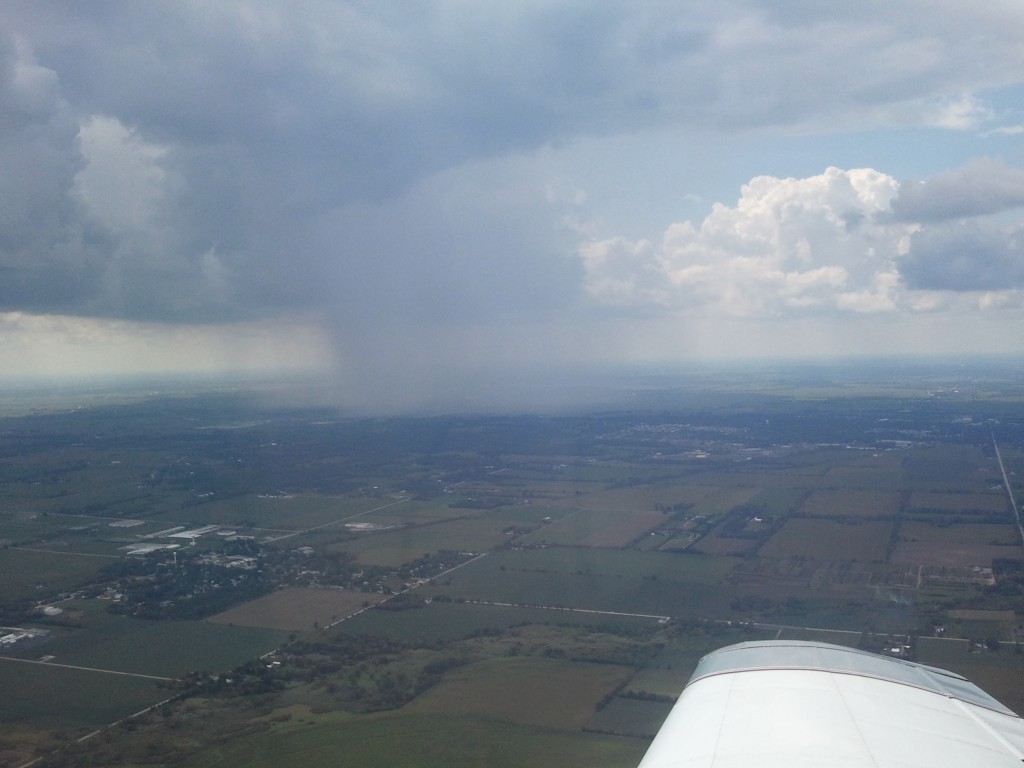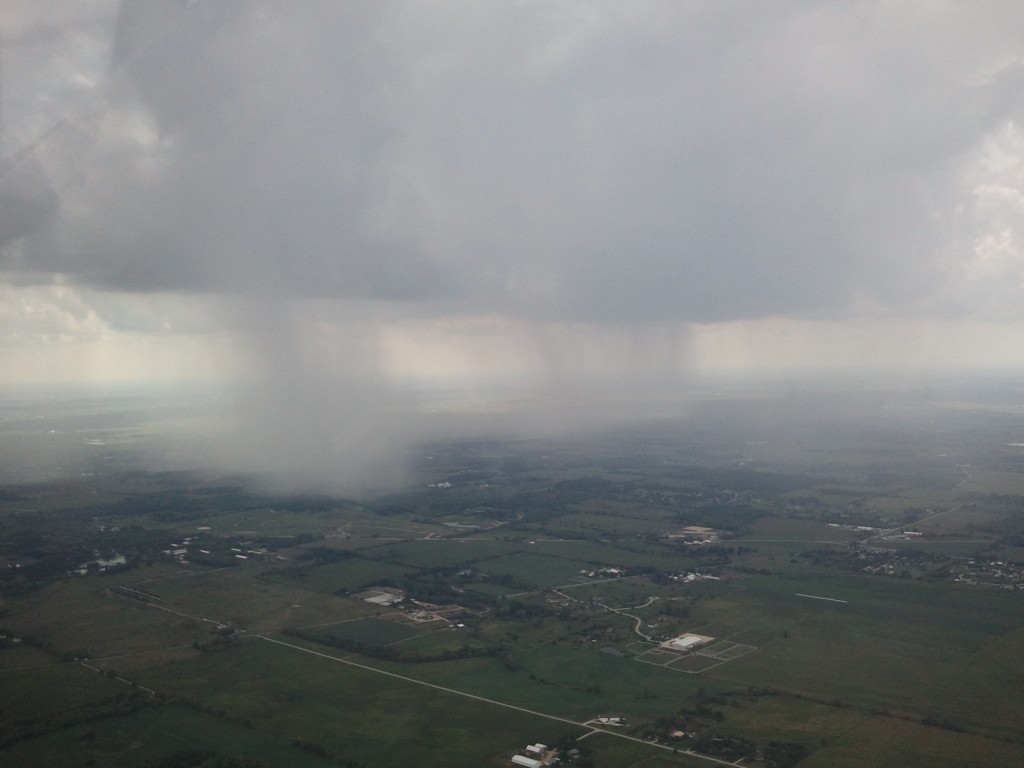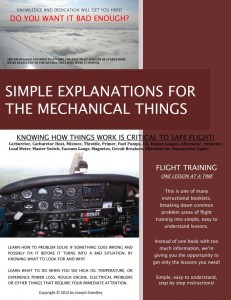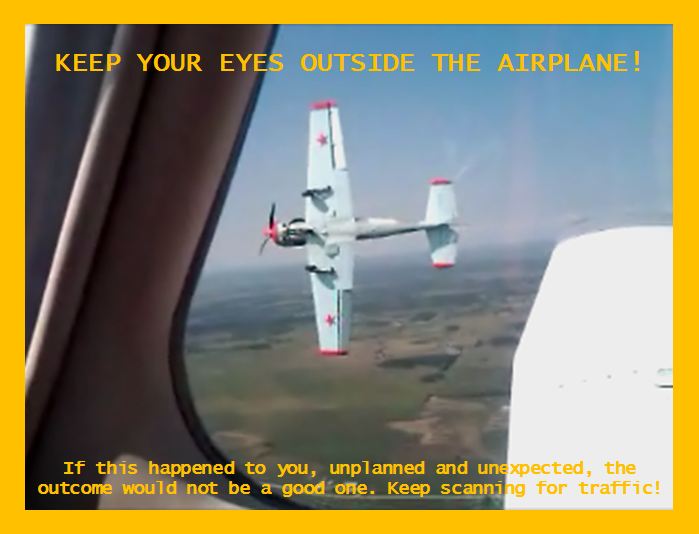by Joseph Standley | Aug 26, 2012 | Pilots, Student Pilots
A few easy steps to flying in a TFR
Temporary flight restrictions pop up all the time. If you don’t know they are there and you fly into one, you risk a suspension of your pilot license. For student pilots, a TFR over your airport means you probably won’t be training that day but for a private pilot, you can still fly as long as you follow a few simple steps.
Rather than write this next article myself, I asked one of the pilots I know to write it because he recently flew into a TFR. I thought it would be good to hear it straight from someone that did it with explanations of the steps he took to do so. After reading this, you will realize that it’s not as scary as you thought. Thanks for taking the time to write this Jeff.
TFRs Got You Down…?
Jeff Dickenson
For those of us living in the Chicago area, Presidential Temporary Flight Restrictions (TFRs) covering a circle with a diameter of 60 NM for a period of 2 or 3 days, have become a common occurrence. During these periods, I all too often hear pilots complaining about being grounded for yet another weekend. While it is true that most TFRs do prohibit some types of flight operations during certain time periods in certain parts of the airspace, it is simply not true that GA flying is prohibited as a whole. In fact, by following a few simple and easy steps, flying within a TFR is not only allowable, but very simple, and not very far removed from any VFR or IFR cross country flight. (more…)
by Joseph Standley | Aug 14, 2012 | Pilots, Student Pilots
I have been asked many times by pilots and student pilot whether it’s ok to fly into rain. There is no problem flying in the rain but it really depends on the type of rain and other factors. Is it a steady rain? Is it showers? You can’t just decide whether it’s ok to fly in the rain based on the type of rain. You need to check all aspects of the weather. You know what your weather minimums are as a pilot. You have certain visibility and cloud clearence requirements that you have to meet. You can’t fly in thunderstorms and should maintain at least a 20 mile distance from the nearest thunderstorm! If it’s raining during a thunerstorm, forget it!
Steady rain is usually ok as long as there are no thunderstorms associated with it, but not always. What I mean by that is how heavy is the rain. Even though rain may not be associated with a thunderstorm, it can lower your visibility quite a bit if you fly through it. In general, if it is raining over a large area, like half the state, then the visibility is probably good. You still need to check the weather to see before you fly though. Where the problem comes in is if there are showers. Showers are more spread out in small areas and are easy to see from the air. They do not cover large areas, but they cover an area of only a few miles. This is a picture of what an area of showers looks like.

Showers like this are NOT good! When I took this picture, it was great visibilty everywhere I looked, except where the showers were. You can see the horizon just fine until you look at the showers. If you can’t see the horizon through the rain, then you won’t be able to see if you fly into it. You could end up with 1 mile visibility or ZERO visibility!
These showers are only covering an area of about 2 miles or less, but they can spread out quickly. They can also fade out just as quickly as they spread. I’ve seen showers associated with a thunderstorm spread from 2 miles to 15 miles in 5 minutes while flying back from Key West Florida in a small plane many years ago! I was pretty nervous and was getting ready to put the plane down on the only road leading through the swap area on my way back if I had to.
It popped up out of nowhere. I was 10 miles miles away at the time, admiring how cool it looked. I thought it was just showers but it ended up being a thunderstorm cell. In just a few minutes, it was twice the size and much closer to me. There were no airports anywhere near me and I was in the middle of the everglades. I was flying over the only road around. I maxed out the power in the plane without exceeding redline. I kept my eye on the storm and kept my eye on the road below me, getting ready to land on it if I had to. By the time it spread out to about 15 miles wide it was only about 5 miles from me. Look at the picture above. These showers are only 5 miles from me but they are less than 2 miles across. Imagine 15 miles across, just as close and it’s a thunderstorm. At this point, I noticed that I was slowly getting farther away. I was 15 minutes from the nearest airport. I called ahead to the airport to see how the weather was there and it was clear sky. By the time I touched down at the airport, it was overcast and raining. By the time I taxied to the ramp, it was pouring rain so hard it sounded like hail. It was thundering really loud too. I had heard 3 other planes talking to the tower too behind me and when I looked back, all 3 landed right in a row behind me in the thunderstorm that I had passed. In 15 minutes it went from clear sky to a heavy thunderstorm. Look at the next picture to see how fast showers can spread out.

These are the same showers as the last picture. In a 10 minute period they spread out to about 4 miles wide. If this was a thunderstorm cell, it would have spread much quicker. Even though it isn’t a thunderstorm, if you were flying too close to it, you may end up flying through it by accident. Even flying through the area to the right side of the picture where you can see through to the horizon could mean a lot of turbulence! I’ve been there, avoiding the main shower shaft, flying in the lighter area. The rain there can be pretty hard and the turbulence enough to make you wonder what the hell you are doing!
My suggestion to you as an experienced pilot and instructor is to stay away from these areas. Keep an eye on them. Watch the direction it’s moving and fly around it on the side it’s moving away from. Dont fly toward it’s direction of travel. If it’s a thunderstorm, stay away by 20 miles or more. If it’s showers, then stay at least 5-10 miles away as long as it’s moving away from you.
by Joseph Standley | Aug 8, 2012 | Pilots, Student Pilots
Do you know what you don’t know?
Over time, I’ve come to realize that many people don’t know much about how any of the mechanical things work in the airplane. They go through the motions of doing a runup and not really knowing if something is right or recognizing if something is wrong. One example I can give is when I was with a student. He was doing a magneto check, and checked the right mag. It immediately started running rough. He checked the rpm drop and switched back to the both position. He then switched to the left mag which was smooth. He went back to both and then went on to the next item in the checklist.
I stopped him at this point and asked if he noticed the difference between the two mags. He said that he did. I asked him why he ignored it and continued on with his checklist if he noticed it and he said it was because the rpm drop was within the limits specified in the checklist. We had a discussion afterwards. As a pilot, you need to be able to problem solve things and if you don’t know how things work and what they are supposed to do, then how are you going to save the day if something ever goes wrong while you are flying? I can tell you right now, that if I was on an airline flying with a pilot that had no clue how things worked, I would be pretty nervous.
Would you be ready and know what to do if the engine started running rough?
What about if the engine quit while you were flying. I’m sure you’d go through the motions of trying to restart by flipping switches and turning on buttons because that’s what you were taught to do, but do you know WHY you are doing it? Do you know how to narrow down the problem? Would you recognize the signs of the problem or know how to minimize your risk?
Can you answer these questions?
Do you know what an alternator is? How about a load meter, fuel pump, circuit breakers, carburetor or carburetor heat, magnetos, primer or vacuum pump? What about the throttle or mixture control, alternate air, annunciator lights, oil or master switch? Most people I talk to only know only a couple of these things. Knowing these things can be critical to your safety and the safety of your passengers. You need to study every detail about all of these items and know them well enough to be able to problem solve if something happens.
We have a new offer made available today to help you!
As of today, we have just released a new E-Lesson explaining in simple terms, you can relate to, so that you can easily understand and remember what all these things are. There are also tips on how to problem solve, explaining what you should be looking for and why. It doesn’t get any easier than this. If you’ve avoided this stuff because it’s boring and hard to understand, then this is for you. If you like the free tips we post on our site, then you’ll love the detail of this even more. The explanations are designed to make it as easy as possible for you! If you want to learn it all in as short a time as possible, buy it now! You’ll be glad you did.
$9.95

The mechanical things and how they work

by Joseph Standley | Jul 26, 2012 | Pilots, Student Pilots

You as a pilot are responsible for collision avoidance. That means, in order to avoid a collision you have to be looking outside the plane! I see so many students and pilots both staring at the instruments instead of looking outside. I will remind them to look outside and for a brief few seconds they look up and around and then fall right back into their instrument panel coma.
This habit has to be broken or it will continue until you aren’t so lucky anymore.. There are many things that keep pilots from looking outside, such as trying to learn something inside the plane, distraction from passengers or even your new aviation toy. You need to learn to multi-task. I’ve asked pilots to turn to a certain heading, just to have them roll into a turn without ever even looking where they are going.
The average general aviation airplane used for training goes around 120 mph. If cars were driving down the street at 120 mph, and you were a passenger, how would you feel if the driver kept pulling out into the street without looking before he turned? The longer your head is down, not looking out, the more you risk death.
Keep scanning for other planes and don’t stop. If you see one out in the distance and it doesn’t seem to be moving, you are probably on a collision course. If you are heading towards each other and both going the same speed, you are closing in on each other at a speed of almost 250 miles per hour! In just a few seconds, you’d be right on top of each other and you wouldn’t have enough time to react. At least if you see it, you can divert your course to avoid a collision.
Whenever I see my students staring inside (which is usually while doing take off and landing practice), I cover up the instruments. I cover all of them. They usually ask how they are supposed to know their speed. I tell them that if they put the plane in the position it normally is for landing, then the speed will fall into place. You don’t need to stare at the airspeed because if you’re holding the plane stable, the speed will stay stable too. If you’re raising the nose, the speed will slow down. If your letting the nose drop, it will speed up. Look at the horizon and you can see it. You can also hear the engine changing.
When it comes time to take off, they worry because they don’t want to rotate too soon or climb out to slow. I tell them that we’ve done it enough times to know what it should look like, feel like and sound like. When you think we are at rotate speed, then rotate. Put your nose in the climb attitude during the climb that we always use and things will be fine. I also tell them to level off when they think we are at pattern altitude. Yes, the altimeter is covered too.
During climbout I will pop off the airspeed cover for a second just to show them that the speed is just fine. Every single time, it has been within 5-7 knots which is within PTS standards. They usually ask again, when to level off. I remind them to do it when they think we are at pattern altitude. After leveling off, I again show them and most of the time, the altitude is within 100′. Only one time was someone off more than that and they were only 200′ off. They did just fine without having any visual reference to any of the instruments. It just proves that you know the plane better than you think you do! We continue several circuits in the pattern like this before I pull off the covers. I say, now that you know you can fly without looking inside at all, keep your eyes outside! They are always amazed at how close they were on speed and altitude.
You need to know your plane well. Focus your attention on how the plane sounds, what it looks like outside while you are doing different maneuvers, etc. You need to realize that you know the plane better than you think you do and get more confidence in your ability. Before you know it, you will be looking outside 99% of the time while holding heading and altitude without a problem. Practice with an instructor sometime and see for yourself! It’s easier than you think.
by Joseph Standley | Jul 12, 2012 | Pilots, Student Pilots
Do you know what causes carburetor ice? Many people struggle with understanding how things work when it comes to engines or mechanical things. Rather than get into pictures of a carburetor and go into complicated examples of exactly how a carburetor works, I will make it easier to understand by describing it in simple terms.
To start with, just as you need air and food to live, an engine needs air and fuel to run. The air and fuel have to get into the engine somehow. There is an opening for that called the carburetor. The carburetor has air directed into it through the holes on the front of the plane which are connected to tubes leading into the opening of the carburetor. Fuel also goes into the same opening, just as your air and food go into your mouth.
When the air and fuel are going into the engine as it should, then everything is fine. Cut off the fuel by pulling the mixture back all the way or block the air holes going into the engine and it stops running, just as you would. Now, I want you to think of the carburetor as a funnel. There’s a big opening on one end tapering off to a small opening at the other end. Air enters the big end of the funnel as it goes into the engine. As air enters into the big opening of the carburetor, it continues into the narrower end before going into the engine. As the air passes through the narrow end, it moves faster. As the air moves faster, it cools down.
Try this as an experiment; hold your hand up to your mouth. With your mouth open as if you were saying “ahhh” at the dentist, blow on your hand. You will notice that blowing on your hand with your mouth open wide produces warm air. Now do the same thing, but this time with your lips close together (restricting the opening like a funnel) like you would when you blow out candles. What you will notice is the air is moving faster and it is cooler. This is the same thing that is happening as air enters the carburetor on its way into the engine. Now wet your hand and do the same thing and it will be even cooler due to evaporation of the wet surface. When the fuel which is also going into the engine vaporizes (turns from a liquid to a gas), it causes the temperature to drop much more. This accounts for the biggest drop in temperature. The difference is that the temperature drop in the carburetor can actually drop to below freezing as the fuel vaporizes!
Now that you know a little about the carburetor and what happens with the air entering the engine through the carburetor, let’s talk about the air. Air holds moisture, just like a sponge. When the sponge gets completely soaked and can’t hold anymore, the water will fall off the sponge. The air does the same thing. When the air gets completely saturated with moisture, it rains. The temperature of the air makes a difference in how much water it can hold. Warm air can hold more water than cold air. When you bring a glass of ice water outside on a hot summer day, what happens? The glass gets wet on the outside. This happens because the ice water is making the air surrounding the glass cooler than the rest of the air. The cooler air can’t hold as much water as the surrounding warmer air. It becomes saturated and will not hold any more water so the water starts running down the side of the glass.
Put both of these together now and you have a setup for carburetor ice. On a summer day, even if it’s 70° outside you can get carburetor ice. Remember, that as the air enters the carburetor, it cools down. If the warm air coming in is holding enough humidity, the moisture will release just as it does on the glass. If the temperature in the carburetor happens to drop to below freezing temperatures, then the moisture that is forming from the temperature drop will freeze inside the opening of the carburetor. If the moisture freezes and starts to build up, it will begin to restrict the amount of air going into the engine as it blocks the opening and it will start running rough because it no longer has enough air. As the ice builds up and the opening gets smaller, an engine failure will soon follow. I hope this helps you understand things a little better. Sign up for our free newsletter for more good tips and find out more on carburetor ice and what to do if you get it in one of our future email newsletters.
by Joseph Standley | Jun 25, 2012 | Pilots
You’ve worked hard and long to build up the experience you needed to get your instrument rating. You learned how to control the plane better, understand airspace and communication better and learned a whole new set of aviation terms. You should definately feel good about yourself for the hard work you put into it to accomplish that goal. The problem is that many instrument pilots forgot where they came from and what it was like to be a VFR only pilot.
So, what am I referring to? I’m talking about your new found IFR language! It’s great to know it and it’s fun to use it, but there is a time for it. Let me explain in simple terms:You’re a pilot who just went out and got his instrument rating or could have even had it for years. Either way, you know all the terms and you know the waypoints, etc
After practing a perfect IFR approach in plane, you get on the common traffic advisory frequency and make a perfectly executed call on the radio using your new IFR language. “Lake in the Hills traffic, Warrior 12345 Tonic inbound on a practice GPS approach.
Why did you make this call? I’m assuming that the reason was to announce your position so that the pilots at Lake in the Hills would know that you are coming in, right? Now answer this question: how is a VFR only pilot going to have a clue where TONIC is? You might as well be speaking a foreign language! VFR pilots know distance and direction, they don’t know the names of the waypoints on your IFR only approach plates nor the distance or direction they are from the airport! I can’t learn spanish, and go around speaking it to english speaking people and expect them to understand, just like you can’t expect VFR pilots to understand your IFR terms.
The whole point of changing to the advisory freqeuency is to let people know WHO you are, WHERE you are and WHAT you are going to do. If you are making a position call and you want people to understand what you are talking about, you must make it in VFR terms. “Lake in the Hills, Warrior 12345, 9 miles west, landing runway 8 (or 26 if circling). Making the calls this way will make it easier for pilots to find you and everyone will have a better picture of what is going on.





